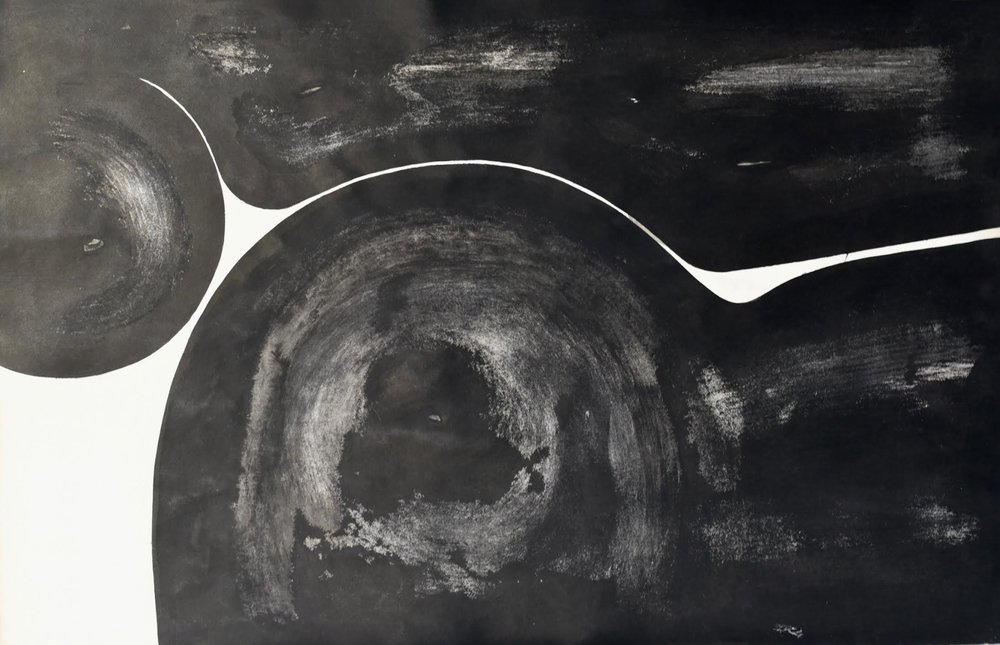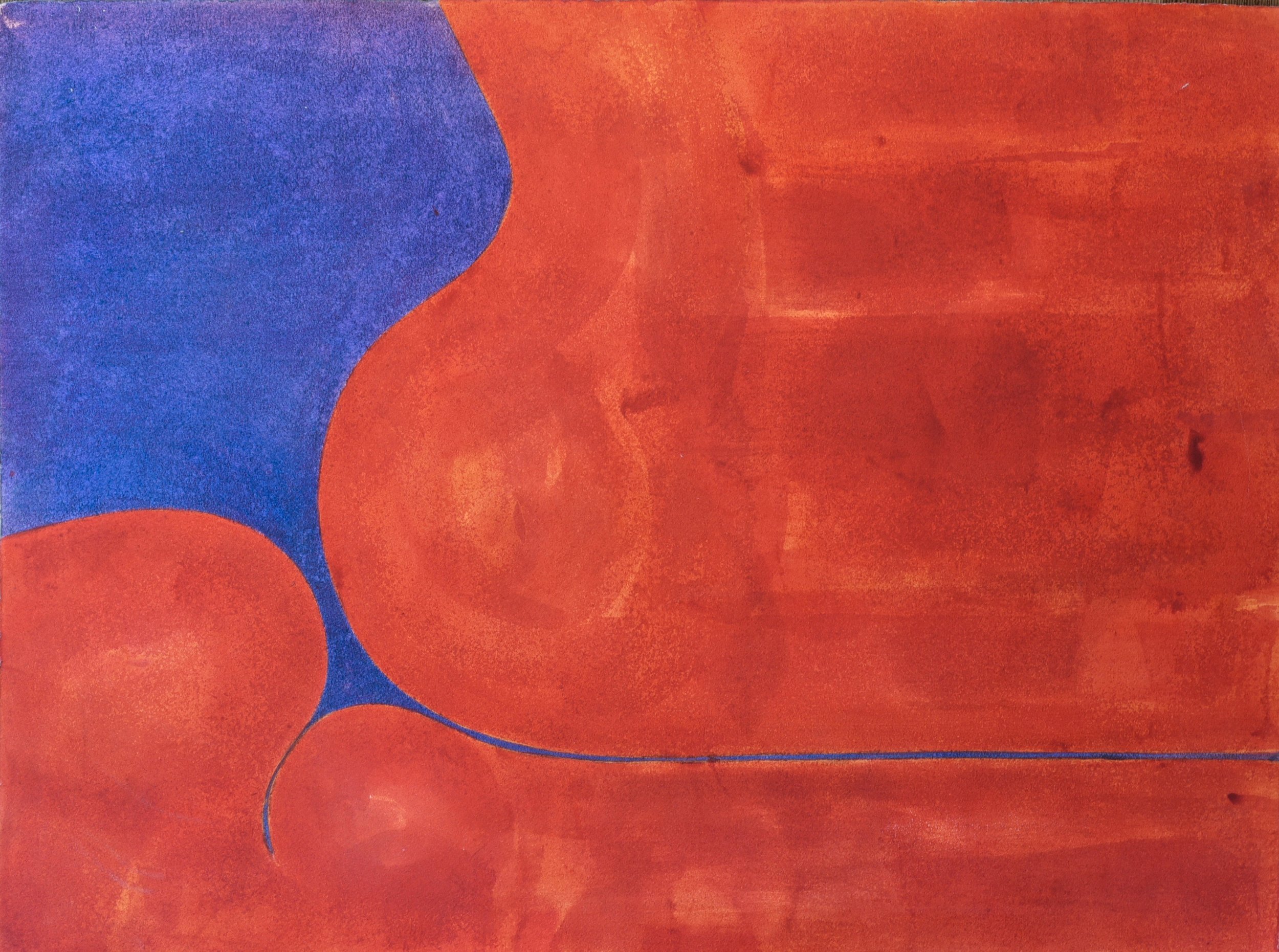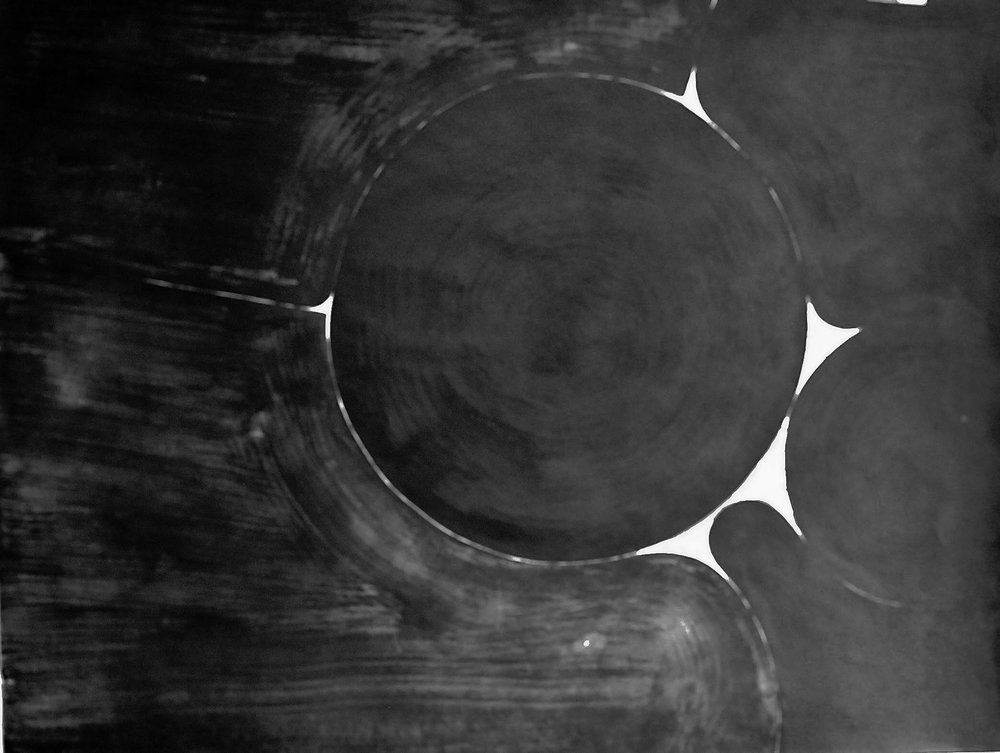“Slivka’s iconic early 1970s ink paintings pop, their raw abstract power expressed through strong sculptural shapes in black and white or vibrant color.”
David Slivka (1914-2010) was one of the last remaining members of the first generation of American Abstract Expressionist artists. Known as both a painter and sculptor, he worked in a variety of mediums, from ink, crayon, and watercolor, to clay, granite, bronze, and wood.
In the early 1960s, Slivka did a series of rapid ink paintings. In the 1970s, he continued this work in ink, creating a series of large, organic, curvilinear abstract paintings. Some are in vivid tones; others in graphic black and white. Several of the pieces from this era were sold to the New York Port Authority and some were destroyed in the Twin Towers bombing on 9/11.
Slivka was born in Chicago and studied at the Art Institute of Chicago. He spent most of his adult life living and working in Greenwich Village, in New York City, where he met and married his wife Rose, a writer, and the two engaged actively as part of what came to be known as the New York School, along with Willem de Kooning, Jackson Pollock, Louise Bourgeois, Robert Motherwell, and many others. During the 1950s, he and Rose made their way to the Springs, on the East End of Long Island, joining other abstract expressionists such as Pollock and de Kooning who had migrated from the Village. Slivka’s deep connection to nature and art would fuse with this area for the next sixty years.
Untitled 1, early 1970s, ink on paper, 38 x 50 in
PORTFOLIO
current & recently sold work












Reflections on DAVID SLIVKA
“The sculptor David Slivka told me about going to an artists’ picnic at Barnes Landing in 1953. He arrived driving his ’32 DeSoto, a car he bought used from the printmaker Louis Schanker . . . At the cookout on the beach were Jackson Pollock and Lee Krasner, Jim and Charlotte Brooks, Bill and Elaine de Kooning, who that summer were staying at Leo Castelli’s on Georgica Pond. Of course, David’s wife Rose, later The {East Hampton} Star’s art critic, was also present. There was plenty of food, alcohol, and a giant bonfire. The swimming was nude, followed by some dancing around the fire. David loved to dance . . . When the time came to return home, Bill and Jackson both wanted to ride in David’s DeSoto, which they called his “Surrealist car,” since its upholstery was falling apart in a fantastic fashion . . . David made vivid the history of Abstract Expressionism as it evolved in the city and on eastern Long Island. When I recorded him for my forthcoming biography of Lee Krasner, he talked about both her and Jackson, as well as about many others . . . He represented so well an entire cultural moment that has now almost disappeared.”
– excerpt from: “Guestwords: Remembering David Slivka,” The East Hampton Star, April 15, 2010, by Gail Levin, Ph.D., distinguished Professor of Art History, Baruch College and the CUNY Graduate Center





